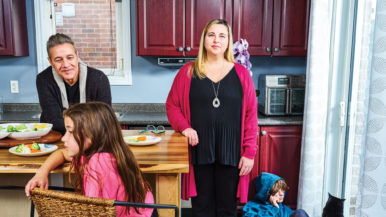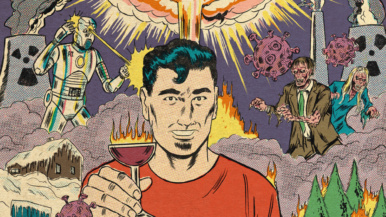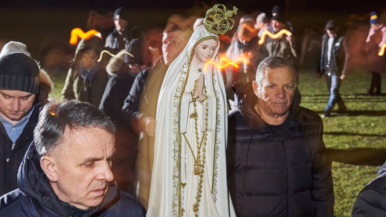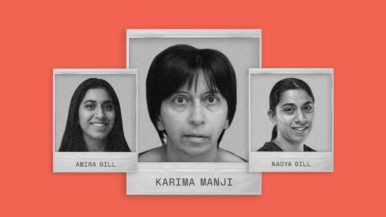Best Bars: A brief history of hooch in Toronto, from 1837 to the present day

Gooderham and Worts opens. Within 40 years, it becomes the largest distillery in the world.
George Davis builds a stage coach stop that will become the frat boy–filled Brunswick House 80 years hence.
Half of Torontonians thrown in jail are there for drunk and disorderly behaviour.
Half of Torontonians thrown in jail are there for drunk and disorderly behaviour.
Much of Toronto’s liquor is smuggled illegally into the U.S. by gangsters like husband-and-wife team Rocco and Bessi Perri.
The creation of the LCBO and the Brewer’s Warehousing Company (later known as The Beer Store) heralds the end of Prohibition, but booze is only available by permit and only dispensed over the counter.
Hotels are allowed to sell beer and wine with meals. Business travel becomes bearable.
A new law allows spirits to be sold by the glass. Flask sales plummet.
The Roof Lounge opens on the 18th floor of what is now the Park Hyatt, bringing back pre-Prohibition cocktails like the old-fashioned.
Liquor can be purchased without a permit.
The LCBO goes self-service, allowing Torontonians to browse the booze aisles for the first time.
Pubs open their men-only drinking rooms to women; cheesy pickup lines flourish.
Legal drinking age reduced from 21 to 18.
Drinking on patios is legalized, leading to The Black Bull’s infamous lineups.
BamBoo opens on Queen West, making umbrella drinks and jazz-funk dance parties popular.
Happy hours are banned (turns out too many people got happy and got behind the wheel).
Charles Khabouth opens Stilife on Richmond, sparking development of the Entertainment District.
Woody’s opens, becoming the hub of the Church-and- Wellesley village. Gay men rejoice.
Alcohol allowed at Leafs and Blue Jays games. Price-gouging pints become the norm.
College Street takes off with neighbourhood hangs like College Street Bar, The Midtown and Ted’s Wrecking Yard.
Last call extended until 2 a.m.
Sex and the City ushers in an era of sickly-sweet concoctions: bellinis, crantinis, and, of course, the cosmo.
Amber opens in Yorkville, spawns a slew of resto-lounge copycats.
Amber opens in Yorkville, spawns a slew of resto-lounge copycats.
Sweaty Betty’s opens on Ossington, spurring the strip’s gentrification and the popularization of Pabst Blue Ribbon as the ironic beer of choice.
College Street, its cool phase long over, is overrun with lycheetini lounges.
BYOW begins, as does the eternal debate over how much is too much for a corkage fee.
Cask-conditioned ale takes over C’est What, Granite Brewery and Bar Volo.
New York club king Peter Gatien opens mega-club Circa; vodka and Red Bull fuel all-night dancing.
Enomatic dispensers at restaurants like Reds allow for wines by the glass without turning the bottle into vinegar.
Barchef opens; booze scientist Frankie Solarik crafts $40 molecular cocktails. Jay-Z is a fan.
Bacon-washed, pickle-topped, salt-filled cocktails populate menus.
Jen Agg and Grant van Gameren open the Black Hoof, foisting barrel aging and artisanal bitters into the mainstream.
Joe Pantalone becomes the face of the new sobriety movement by starting an 18-month fight against booze on Ossington.
Toronto Temperance Society, a members-only cocktail lounge, revives the old-school speakeasy.
Ceili Cottage and Queen and Beaver, the city’s first real gastropubs, put Firkins everywhere to shame.
Circa goes bust.
An onslaught of new rustic Italian restaurants makes medicinal-tasting aperitifs like Aperol and Campari all the rage.
Ontario craft brewers like Flying Monkeys make beer geekery chic.
Jen and Grant break up. Jen opens Cocktail Bar, the apotheosis of the city’s new artisanal cocktail culture.
By Denise Balkissoon, Ariel Brewster, Andrew D’Cruz, Matthew Hague, Malcolm Johnston, Emily Landau, Jason McBride, Alexandra Molotkow, Mark Pupo, Peter Saltsman, Courtney Shea and Eric Vellend. Timeline Photographs: Istock; Getstock; David Laurence; A. H. Hider/Wikimedia Commons; Rob Nguyen/Flickr and courtesy of Barchef; Park Hyatt Toronto; and Woody’s





